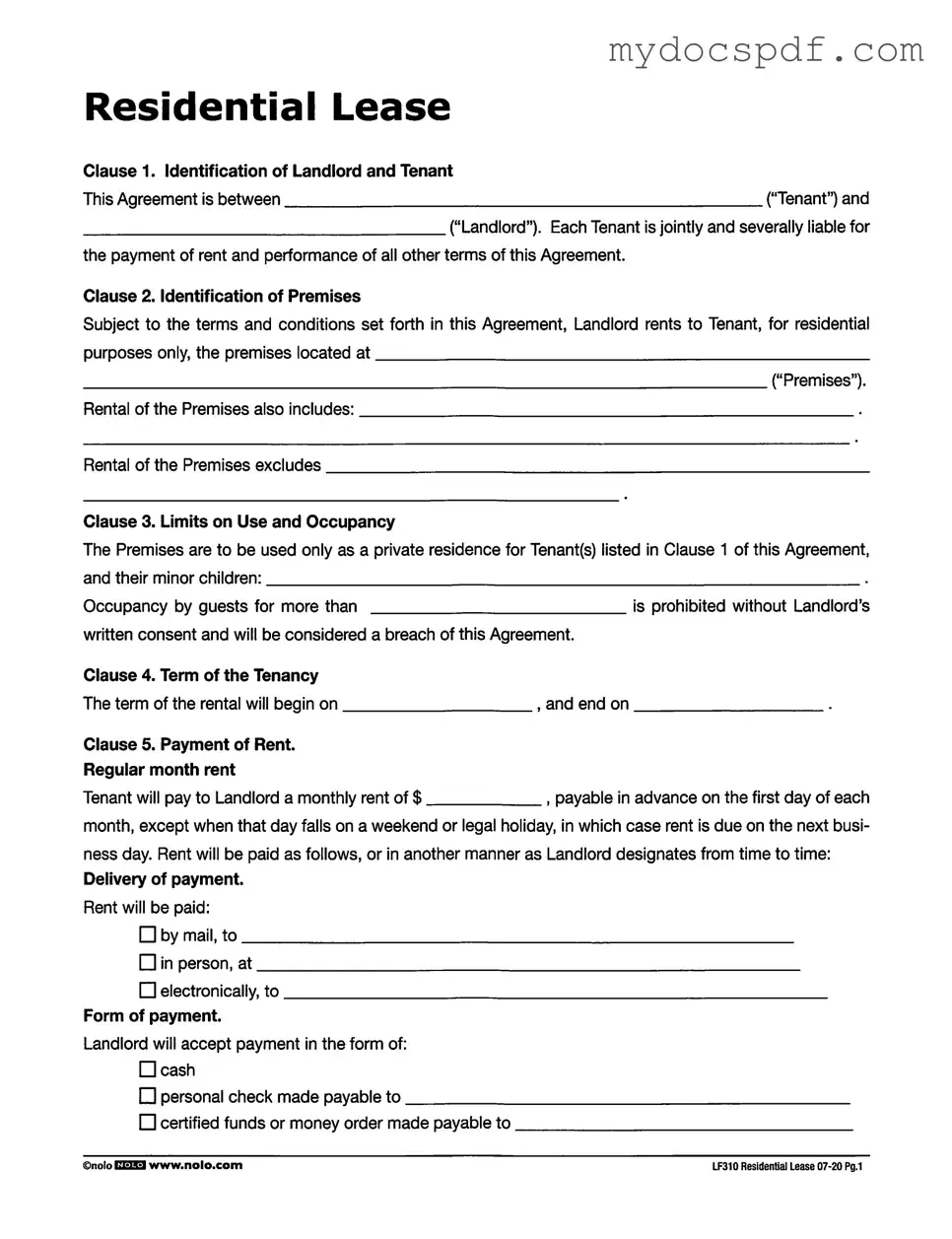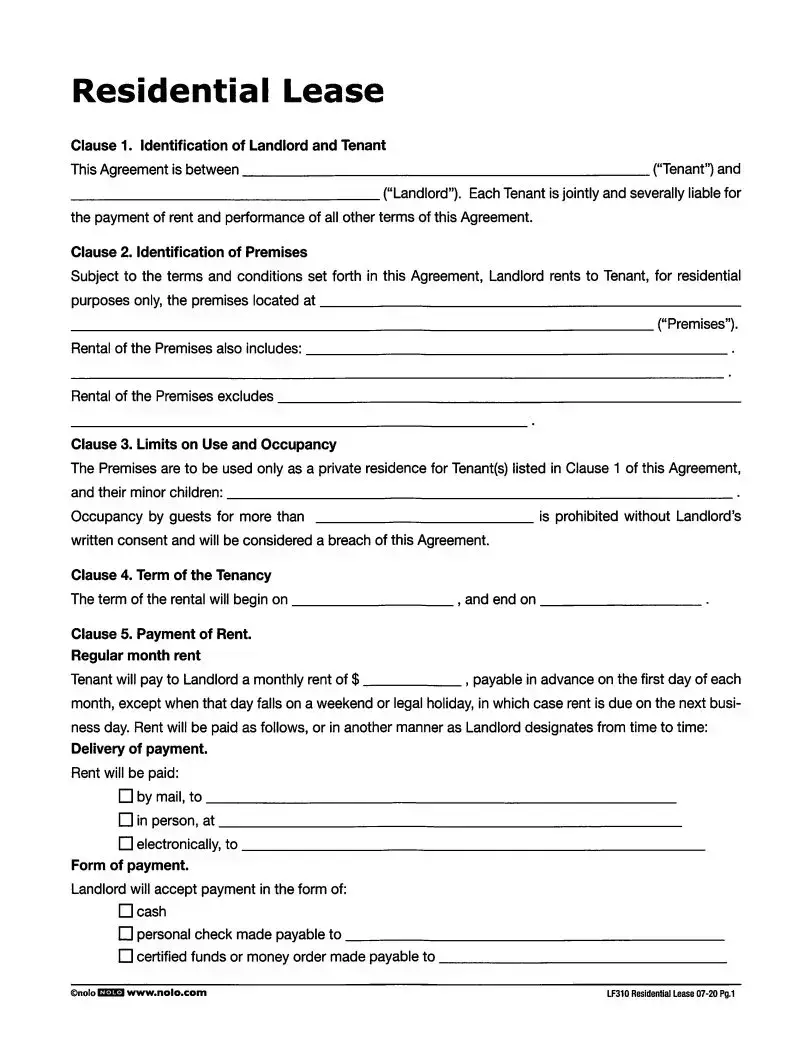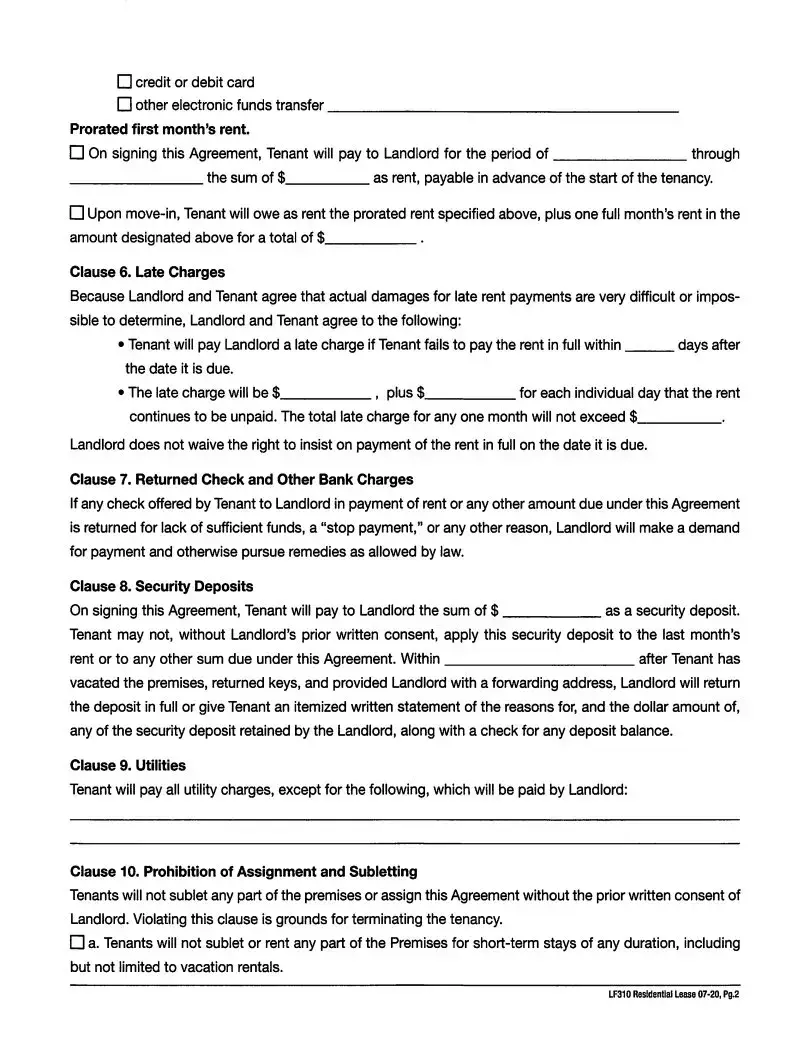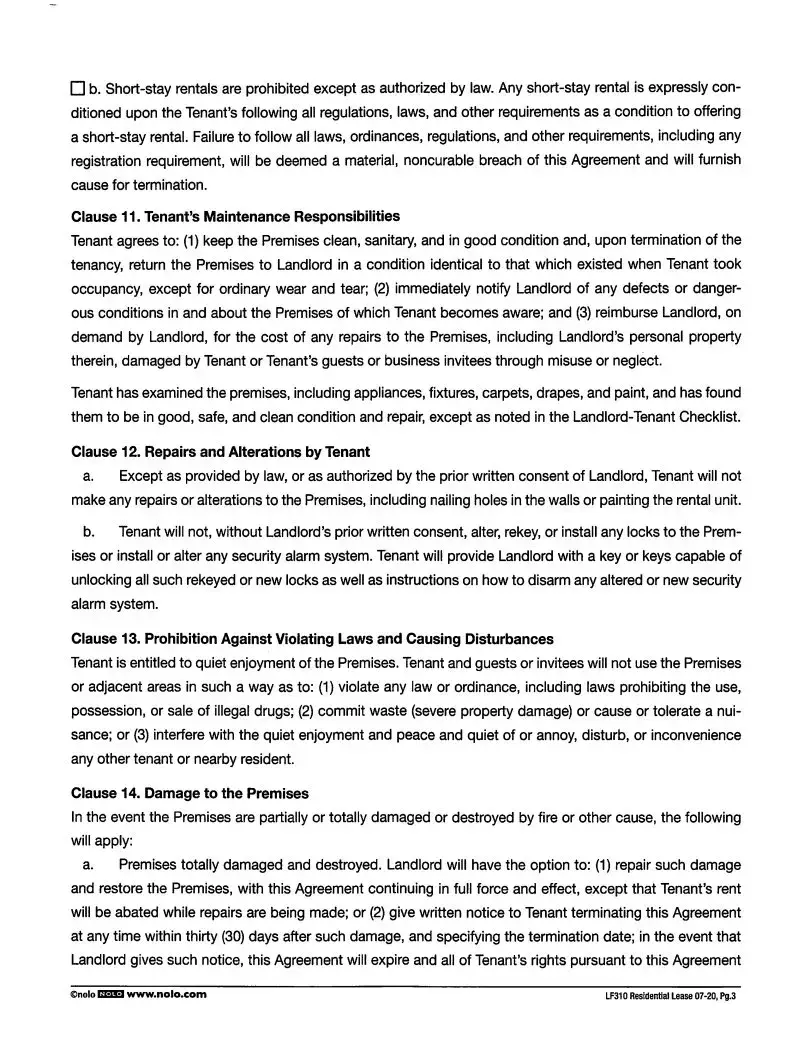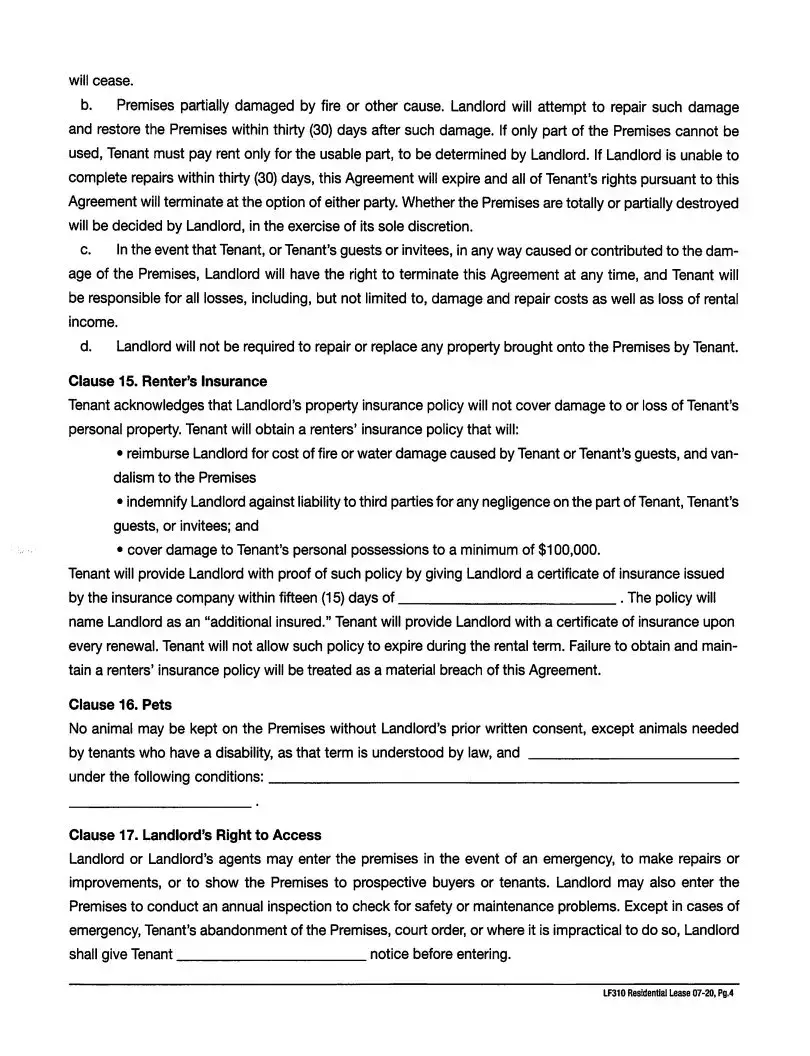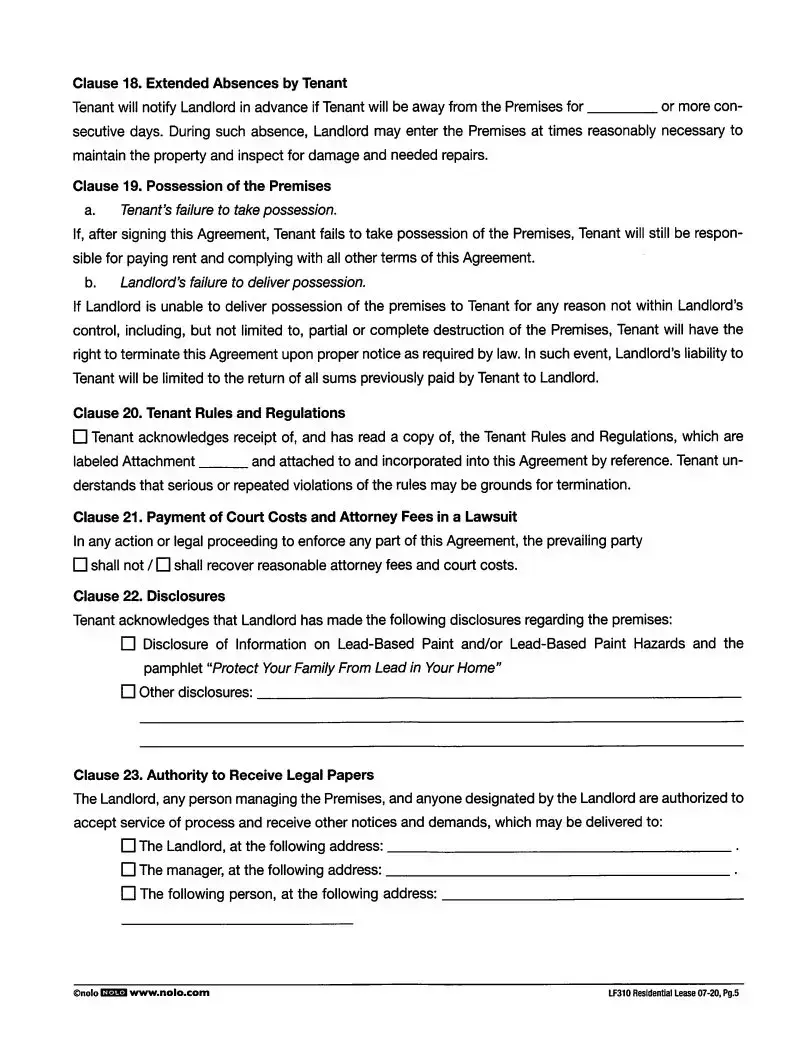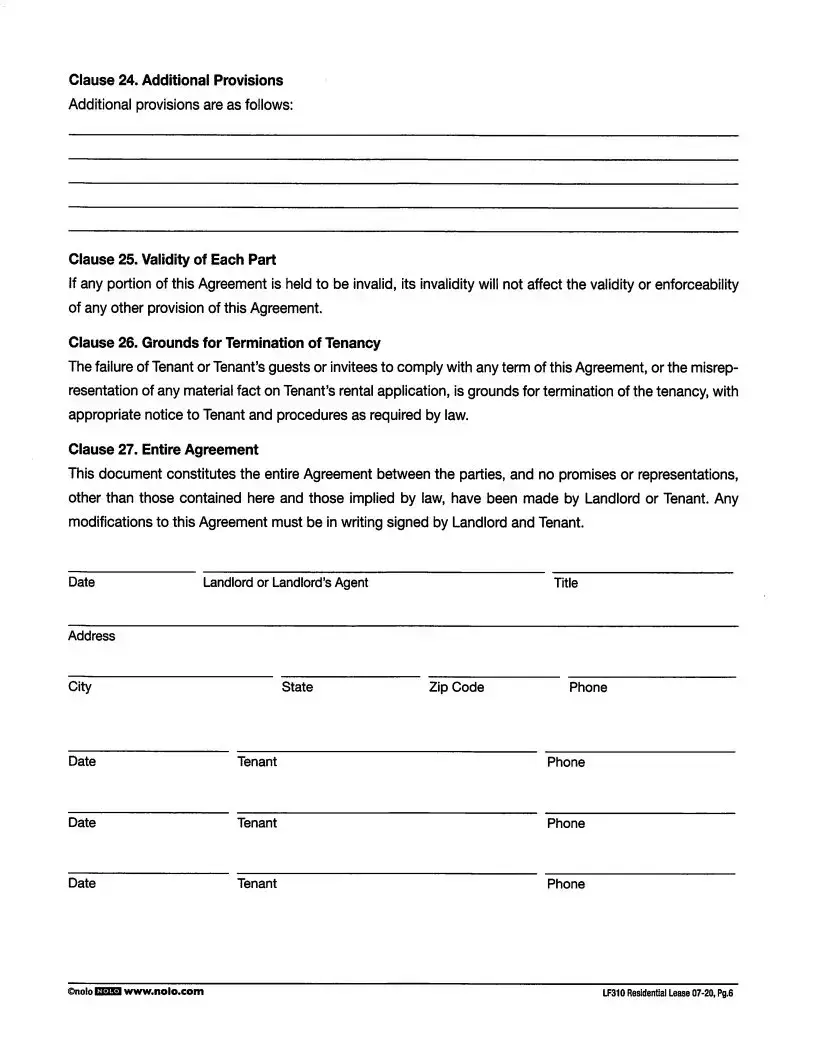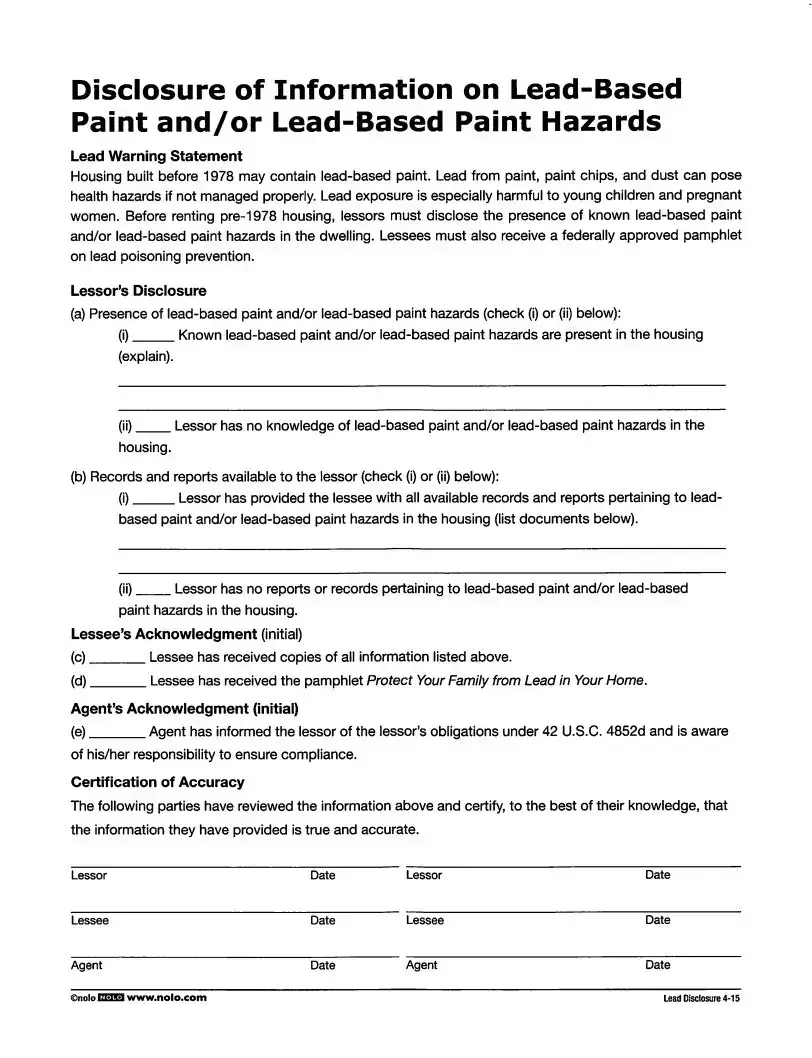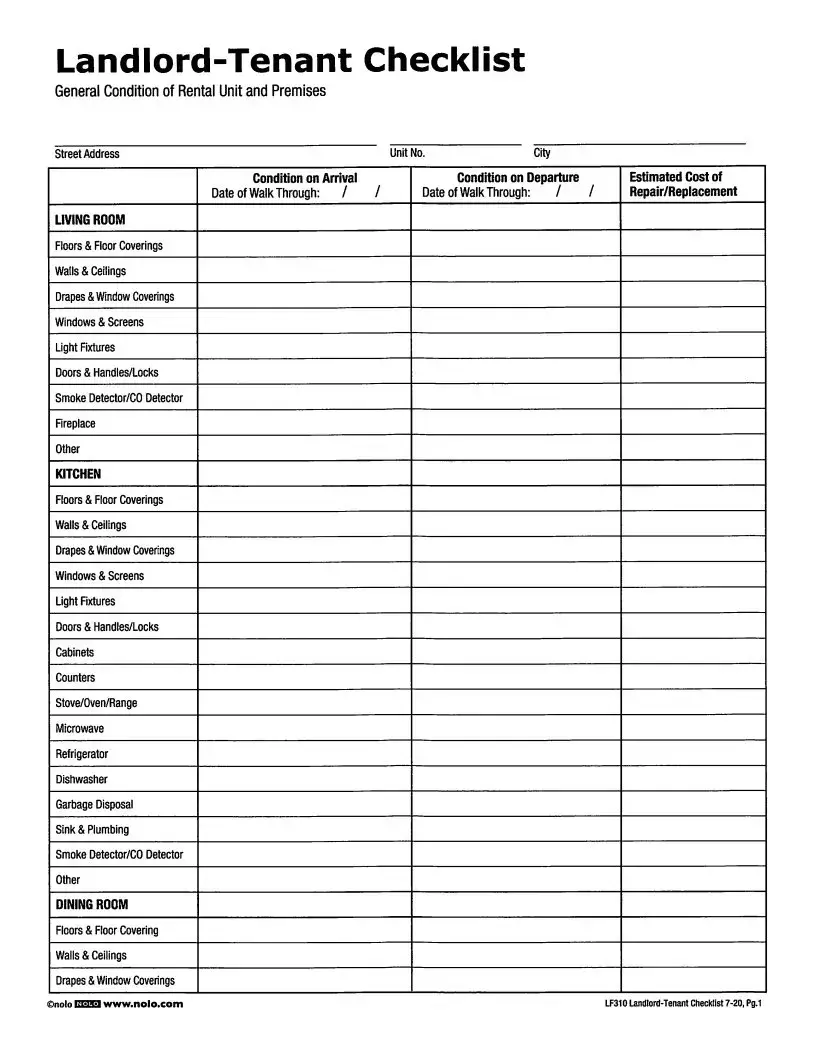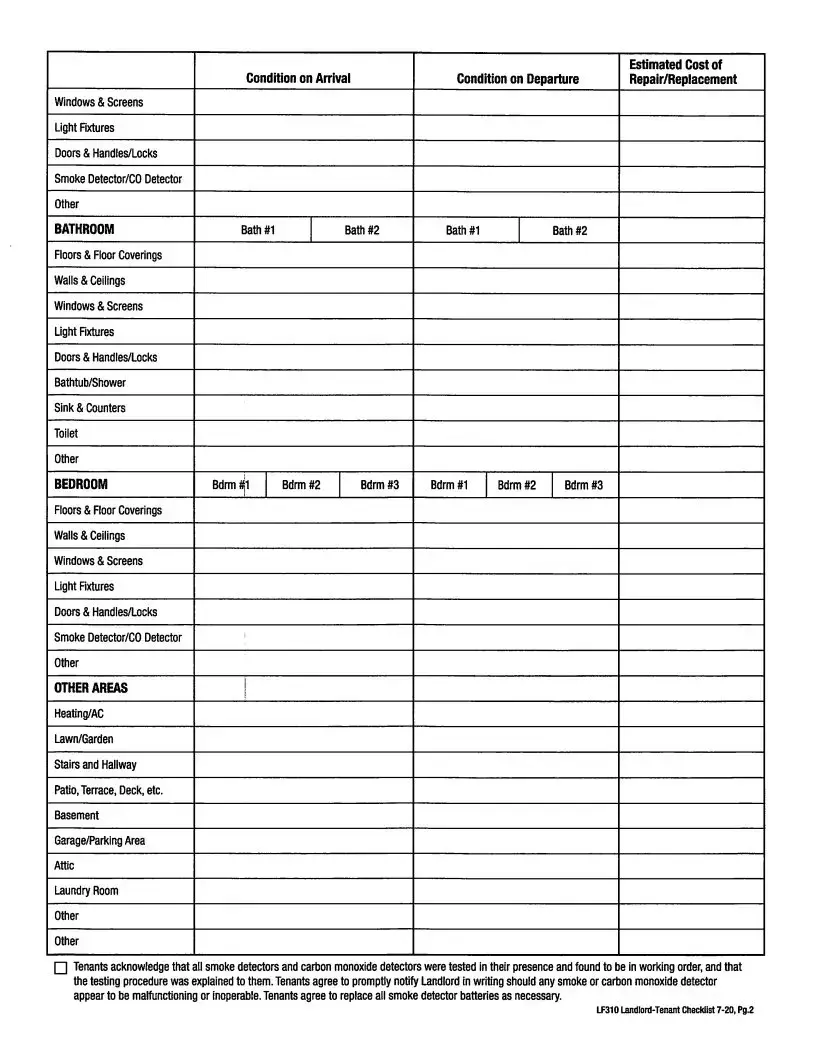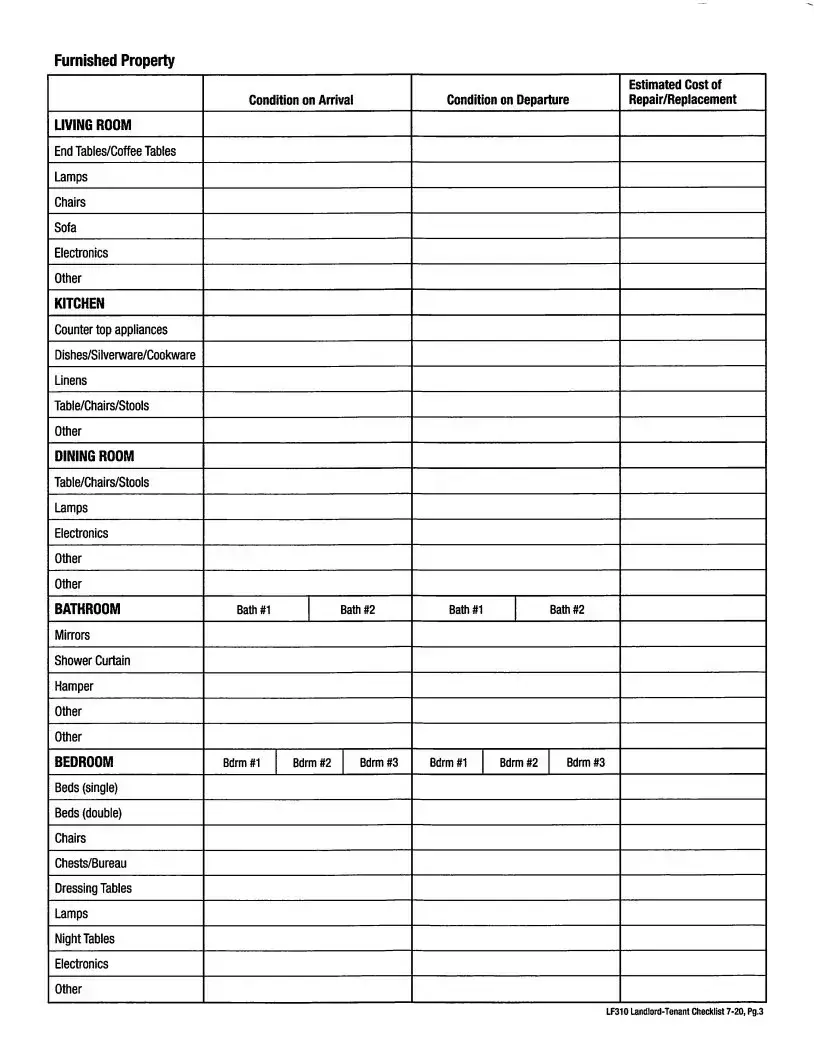The LF310 Residential Lease form serves as a comprehensive agreement between landlords and tenants, outlining key responsibilities and expectations for both parties. It begins with the identification of the landlord and tenant, establishing that each tenant is jointly responsible for rent payments and compliance with the lease terms. The form specifies the premises being rented, emphasizing that the property is intended solely for residential use. Restrictions on occupancy and use are clearly defined, prohibiting unauthorized guests and stipulating the need for written consent from the landlord for extended stays. The lease term is established, indicating the start and end dates of the rental period. Payment terms are detailed, including the monthly rent amount, due dates, and acceptable payment methods. Provisions for late charges and penalties for returned checks are included to ensure timely payments. Additionally, the form outlines security deposit requirements, specifying the amount due at signing and conditions for its return. Utility responsibilities are also addressed, clarifying which costs the tenant must cover and which are the landlord's obligation. Finally, the LF310 form prohibits subletting or assignment of the lease without prior consent, reinforcing the importance of maintaining control over the property. This structured approach helps to minimize misunderstandings and protect the interests of both parties involved in the lease agreement.
